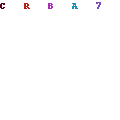Preface
Short history and background preceding the battle of Blood River
Jan van Riebeeck was sent to the Cape of Good hope in 1652 by the Netherlands East Indian Company to establish a commercial station halfway from the Netherlands to India to supply fresh food to ships passing around the Cape to India. After many years this was such a successful undertaking that by the end of the 18th century farming was extended far inland up to the Fish River near the present land of the Xhosa. The whole area from Cape Town eastwards was then uninhabited. It so happened that England annexed the Cape Province in 1806 and established its own government in Cape Town. This government soon passed legislation which were in all not in favour of the farmers. In fact, it totally favoured the Native people. This caused gross dissatisfaction and also grave unrest amongst the farmers resulting amongst others in the Slagtersnek Rebellion and the execution of six farmers. The raids by native tribes on farmers increased to such an extent making farming at the eastern border totally impossible.
Manifesto by Piet Retief, 1837
The dissatisfaction of the farmers is more or less included in the manifesto published in the Graham’s Town Journal on 22 February 1837 which entailed amongst others the following::
We despair to save the Cape Colony from all the evil threatening it by the riotous and dishonest behaviour by vagabonds who are allowed to disrupt the land in all parts. We see no future for peace and happiness for our children in a land so troubled by internal unrest.
We protest against the continued ransacking by the natives causing the destruction of most of the bordering districts of the Colony.
We complain about the unjust blame on us by dishonest persons under the cloak of religion whose witnesses without proof were accepted in England.
We declare solemnly that we leave the land with the desire to have a quieter life to what we had thus far.
We will not molest any people and will not take the least property from anybody. But if attacked, then we will regard us fully justified to defend person and property to the utmost against the enemy.
We will as far as we go make known to all native tribes our intention as well as our desire to live in peace and friendship.
We leave our fruitful native land where we suffered enormous damage with stern trust on the all-seeing, just and merciful God whom we will always fear and obey in all humbleness.
The farmers left the Colony under the leadership of various leaders such as Louis Trichardt, Hendrik Potgieter, Gerrit Maritz, Piet Uys and Piet Retief. Some ended in the Free State and others in the Transvaal, as far north as the Zoutpansberg, but Piet Retief, followed by Maritz, went across the Drakensberg to Natal. There he entered into an agreement with the then Zulu king, Dingaan, to occupy the vacant part of Natal, south of the Umfolozi River.
Dingaan insisted as a condition that Retief’s men must first bring back all the cattle which Sikonyella, king of the Matabele, situated in the west of Transvaal, had stolen from him. Soon after the return of the cattle by Retief, he and 70 of his men were treacherously murdered by Dingaan’s men on 5 February 1838. This was witnessed by a British missionary named Owen. Then followed the barbarous murdering of the people (mainly women, children and old men) who were left behind in the vicinity of the now known towns of Weenen, Colenso and Estcourt. In this process the Voortrekkers (thus called because of their pioneer endeavours to move away from the Cape Colony) suffered severe losses and left the remainder of them with awe and uncertainty. They gathered in various laagers in close vicinity of each other. Maritz died of natural causes, leaving them destitute. Andries Pretorius, a wealthy and well known man from the Colony was called as their leader. It was decided that the severe atrocities by Dingaan will have to be punished. A Punish Commando of about 470 men was formed and approached Dingaan’s kraal, each day forming laager after laager with their oxen and wagons the nearer they came. On their way they decided as God fearing people to make the vow to God. God answered their prayers by giving their enemy “into their hands”.
There were no losses on the side of the Voortrekkers! On the Zulu’s side there were numerous casualties causing them to flee and burn their houses at Dingaan’s kraal. The latter, of course, was not necessary, because it was not the intention to destroy the Zulus, but only to punish them.
With this information, I hope that the book by Mossie van den Berg, will be better understood.
Hannes van der Merwe, translator
Subscribe to:
Post Comments (Atom)





No comments:
Post a Comment